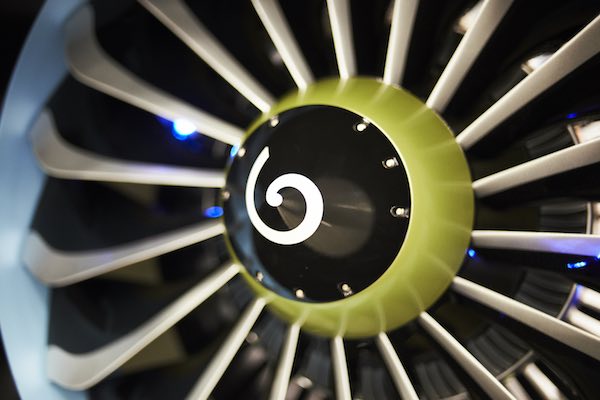
Your summer reading is delivered—the June/July issue of the ACerS Bulletin is now available online.
The new issue is centered around ceramic-matrix composites and how these intriguing materials are poised to completely change the energy landscape of the aerospace industry. But composite materials aren’t the only thing with a bright future—this issue also features our annual student content, showcasing the experiences of the next generation of leaders in materials science.
Frank Zok, professor in the Materials Department at the University of California, Santa Barbara, writes the cover story about how advances in ceramic-matrix composites are affording revolutionary gains in efficiency and performance of gas turbine engines. Attractive materials properties like low density, high strength and toughness, and high-temperature capabilities of these composites are putting them in an aggressive position to replace superalloys in aircraft engines. And although ceramic-matrix composites will already begin to appear in service in aircraft later this year, continued research progress will get these composites into the hottest parts of the engines—and those installations will yield even greater engine payoffs. As Zok notes, a new epoch in high-temperature ceramic-matrix composites is upon us.
Ceramic-matrix composites are also a hot topic among the next generation of leaders in the ceramic and glass communities—the June/July Bulletin also serves as the annual student issue, featuring a host of student-written content. In addition to an introduction from Lisa Rueschhoff, chair of the ACerS student leadership organization, the President’s Council of Student Advisors (PCSA), and a recap from the students’ recent annual Congressional Visits Day event in Washington, D.C., the student section features the experiences of current materials science students. Students Natalie Larson, Amjad Almansour, Alexandra Loaiza, and Randy Ngelale share their experiences researching ceramic matrix composites, supporting diversity, and learning the meaning of home. Be sure not to miss this promising glimpse into the next generation of materials scientists and engineers.
The new issue also features a short research report on the potential of new coatings to improve the thermal performance of LEDs, from scientists Shou-jin Zeng, Zhi-feng Liu, Ji-bin Jiang, Ming-der Jean, and Su Yang (from Hefei University of Technology and Fujian University of Technology, both in China). Heat management strategies are critical for LEDs, and the authors have developed what might be a more efficient and more economical thermal solution—aluminum nitride coatings. The researchers report on their development of aluminum nitride coatings deposited via electrostatic spraying, an economical method that could help lower production costs while also optimizing the thermal performance of LEDs. Although the authors are still working to optimize the coatings, the progress so far is promising for improved heat resistance and dissipation in future LEDs.
Plus, there’s lots more good stuff inside this—and every issue—of the ACerS Bulletin. The current issue is free to all for a short time, but remember that all the valuable content in over ninety years of past issues of the ACerS Bulletin is free only to members—so considering joining us today!

